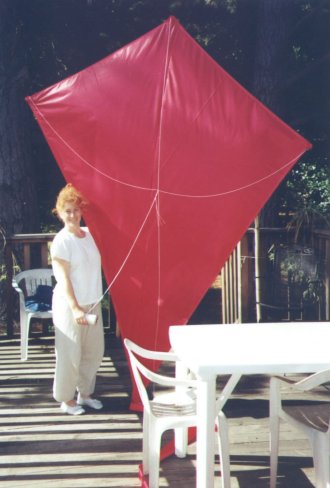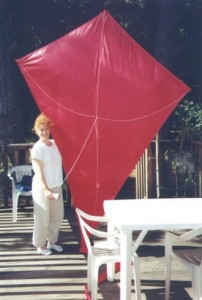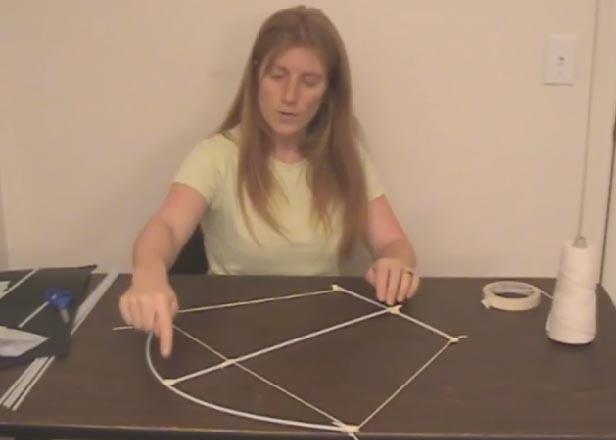You'll need to get: 11”x17” sheet of paper (you can also tape two 8.5" x 11" sheets together to make this size), 10 feet of string, two donut stickers (also known as page reinforcement stickers), a stapler, and a straw.
Why does this kite fly? This kite soars because you’re holding the kite at the correct angle to the wind. The kite actually has two things (scientifically speaking) going on that help it fly: first, the shape of the wing cause a pressure difference that create lift under the wing surface, the same way that real airplanes generate lift. Second, the angle that the kite hits the wind generates impact lift on the kite, the same way fighter jets generates lift, since fighter jet’s wings are not curved like an airplane’s. In an airplane, the wind flows both over and under the kite, and with this shape, the air flying over the kite is traveling a bit faster than the wind under the kite. Higher wind speed means lower pressure, so the underside of the kite now has a relatively higher pressure, thus pushing the kite upwards into the sky.
Can I add string to any paper airplane and make it into a kite? Anytime someone asks us a question like this, we respond with a very enthusiastic: “I don’t know. Try it!” Then we offer enough tools for the job with a smile. We want kids experimenting with new ideas (even if we’re not entirely sure if they will work). So go ahead, roll up your sleeves, test out your ideas, and prepared to learn.
Here's what you need to do:
Please login or register to read the rest of this content.


 Did you notice how BIG these kites can get? And yes, that's me in the photo, at full size!
Did you notice how BIG these kites can get? And yes, that's me in the photo, at full size!